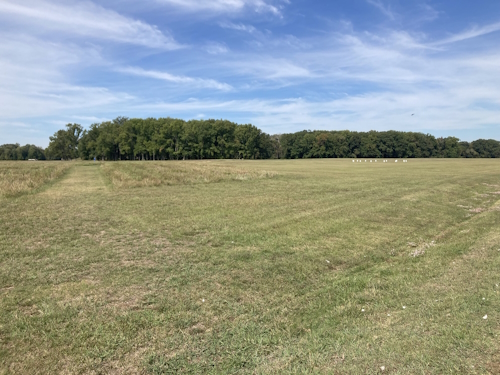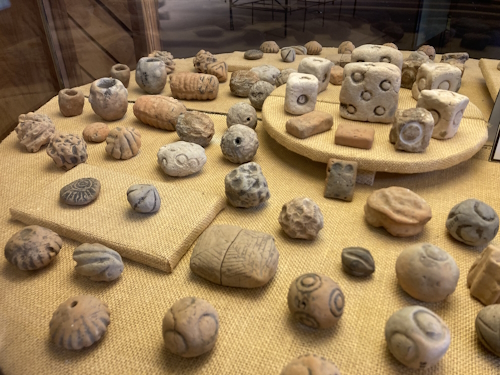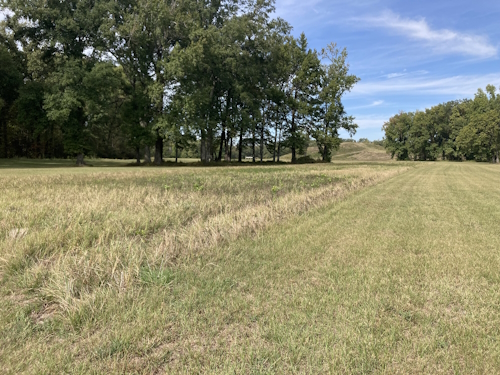Blog WHS Visits
WHS #872: Poverty Point
On my recent trip to the eastern half of the USA, I visited all three ‘mounds’ or earthworks WHS: Cahokia, Hopewell and Poverty Point. During my preparations, I found the last one the most intriguing. And although it probably has the least remaining visible remains, after my visit I still think Poverty Point is the most interesting of the three sites. Reviews of the other two will be published as well in the coming weeks, but I will now put the spotlight on Poverty Point.
The site isn’t visited that often as it lies in the middle of nowhere deep in Louisiana. I ‘did’ it as a day trip from Dallas by rental car – it’s 5 hours each way, which is long of course but it’s a straight shot east on cruise control and without much traffic. ‘Poverty Point World Heritage Site’ (this name is used on road signs to distinguish it from a nature park also called Poverty Point) lies just outside the cute towns of Delhi and Epps where everybody seems to live in a prefab house and have his or her own church.
Poverty Point is the oldest of the inscribed earthworks in the US. It was made by prehistoric hunter-gatherers who (at least seasonally) lived on the earthen ridges. In this lies the big distinction with the other two WHS that were merely ceremonial sites: because it was lived in, many artifacts have been left and rediscovered. The visitor center has display cases full of very sharp-looking spearheads, engraved objects, figurines that may have been fertility symbols and decorated clay objects. Some are so-called “Poverty Point Objects” – stones that were heated for use in cooking.
You can choose to visit the outdoor part of the site by car or on foot – for each, they give you a booklet with explanations of the waymarks. I chose the 4km long hike. Before you arrive at the visitor center you’ll notice what looks like farmland on both sides of the road – these are the main Earthworks! It took me strolling through the grass on the first part of the trail to understand that what I was walking on actually was ‘it’. This is the area where the concentric, C-shaped earthen ridges were made. Differential mowing of the grass makes them stand out more, and they are visible if you look hard. White markers indicate where traces of wooden post circles have been found. But this WHS truly is best seen from the sky: it wasn't until archeologist James Ford in the 1950s examined aerial photographs that he recognized the geometric design.
Similar to Cahokia, a fairly busy road cuts through the site (and the Earthworks). ICOMOS gave Poverty Point a Deferral advice (which was overturned at the WHC meeting) because it wanted to have the road diverted. I must say it did not bother me as much here as in Cahokia - at least they have a pedestrian crossing here. On the other side of the road from the visitor center, you can find the main mounds. These weren’t burial mounds and their use is unknown. A boardwalk will lead you up to the top of Mound A, with distant views of another earthwork, Lower Jackson Mound.
The trail then continues through a forest. The prehistoric people found berries here, there was water from a river and wildlife still uses it so it would have been good for hunting. It also has native pawpaw plants that carry edible fruits, which nowadays are used in fancy foods.
Overall it was a pleasant walk and I think the site management of Poverty Point has made the most out of the interpretation of this enigmatic site with its colossal earthworks. The site was only nominated under criterion iii, while Hopewell (with younger and smaller earthworks and oh, an active golf course instead of a road) this year also managed to get in under criterion i (a masterpiece of human creative genius) for the "enormous scale...and geometric precision" of its earthworks, which seems unfair to Poverty Point.
Els - 15 October 2023
Comments
Jay T 15 October 2023
I'm glad you enjoyed your visit to Poverty Point, because I had thought it might be the most challenging of the three earthworks to appreciate. Like Kyle mentioned, it's great to see the perspective of someone who saw all three sites in one go!


